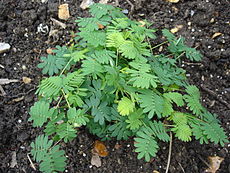Plant Neurobiology
Plant neurobiology studies those aspects of plant physiology with perceived similarities to the neurobiological processes of animals. It concerns mostly the sensory adaptive behaviour of plants and plant electrophysiology. The Indian scientist J. C. Bose is credited as the first person to research and talk about neurobiology of plants. Many plant scientists and neuroscientists, however, view it as controversial, because plants do not have neurons.
Adaptive behaviour
Plants are not passive entities merely subject to environmental forces, nor are they ‘automata‘-like organisms based only on reflexes and optimised solely for accumulation of photosynthate. Plants respond sensitively to environmental stimuli by movement and changes in morphology. They signal and communicate within and among themselves as they actively compete for limited resources, both above and below ground. In addition, plants accurately compute their circumstances, use sophisticated cost benefit analysis and take tightly controlled actions to mitigate and control diverse environmental stressors. Plants are also capable of discriminating positive and negative experiences and of ‘learning‘ (registering memories) from their past experiences. Plants use this information to update their behaviour in order to survive present and future challenges of their environment. Plants are also capable of refined recognition of self and non-self, and are territorial in behaviour.
Furthermore they systematically use hormonal signaling pathways to coordinate their own development and morphology.
Plant neurobiology is a discipline of plant science which is on the fringes of accepted science. The discipline claims to study the role of signaling, communication and behaviour to integrate data obtained at the genetic, molecular, biochemical and cellular levels, with the physiology, development and behaviour of individual organisms, plant ecosystems and evolution.
The neurobiological view sees plants as information-processing organisms with rather complex processes of communication occurring throughout the individual plant organism. Plant neurobiology researches how environmental information is gathered, processed, integrated and shared (sensory plant biology) to enable this adaptive and coordinated responses (plant behaviour); and how sensory perceptions and behavioural events are ‘remembered’ in order to allow predictions of future activities upon the basis of past experiences. Plants, it is claimed by plant physiologists, are as sophisticated in behaviour as animals but this sophistication has been masked by the time scales of plants ‘response to stimuli, many orders of magnitude slower than animals‘.
Plant neurobiologists rely primarily on metaphors and analogies to argue that complex responses in plants can only be produced by intelligence.
Electrophysiology
Plant cells can be electrically excitable and can display rapid electrical responses (action potentials) to environmental stimuli. These action potentials can influence processes such as actin-based cytoplasmic streaming, plant organ movements, wound responses, respiration, photosynthesis and flowering.
These electrical responses can cause the synthesis of numerous organic molecules including ones that act as neuroactive substances in other organisms. Thus, plants accomplish behavioural responses to environmental, communicative, and ecological contexts.
This electrophysiology of plants probably reflects the basic limitation that all life must work within the physical laws of matter and that electrical signals are one of the only ways any organism can send a fast signal between cells. While many cells in nearly all living organisms can be electrically excitable, this is not evidence of neurons, or of intelligence.
Neurochemicals
Plants produce several proteins found in the animal neuron systems such as acetylcholine esterase, glutamate receptors, GABA receptors, and endocannabinoid signaling components. They also use ATP, NO, and ROS like animals for signaling.
See also:
